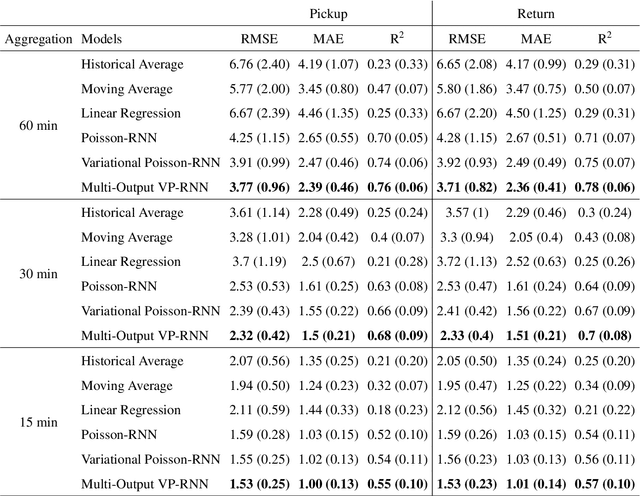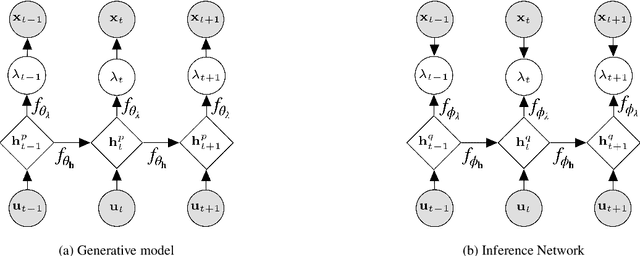Predictive and Prescriptive Performance of Bike-Sharing Demand Forecasts for Inventory Management
Paper and Code
Jul 28, 2021



Bike-sharing systems are a rapidly developing mode of transportation and provide an efficient alternative to passive, motorized personal mobility. The asymmetric nature of bike demand causes the need for rebalancing bike stations, which is typically done during night time. To determine the optimal starting inventory level of a station for a given day, a User Dissatisfaction Function (UDF) models user pickups and returns as non-homogeneous Poisson processes with piece-wise linear rates. In this paper, we devise a deep generative model directly applicable in the UDF by introducing a variational Poisson recurrent neural network model (VP-RNN) to forecast future pickup and return rates. We empirically evaluate our approach against both traditional and learning-based forecasting methods on real trip travel data from the city of New York, USA, and show how our model outperforms benchmarks in terms of system efficiency and demand satisfaction. By explicitly focusing on the combination of decision-making algorithms with learning-based forecasting methods, we highlight a number of shortcomings in literature. Crucially, we show how more accurate predictions do not necessarily translate into better inventory decisions. By providing insights into the interplay between forecasts, model assumptions, and decisions, we point out that forecasts and decision models should be carefully evaluated and harmonized to optimally control shared mobility systems.
 Add to Chrome
Add to Chrome Add to Firefox
Add to Firefox Add to Edge
Add to Edge